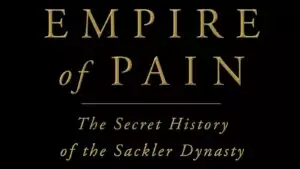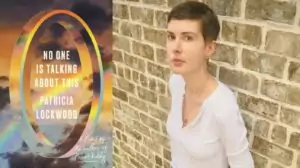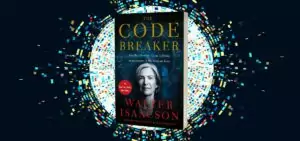By Nicky Charlish

✅ AI Essay Writer ✅ AI Detector ✅ Plagchecker ✅ Paraphraser
✅ Summarizer ✅ Citation Generator
Books do furnish a room. They also furnish impressions, and not always positive ones. The title of this one summons up the image of a coffee table book containing soothing, safe art that will upset no one. Does the content live up to this first-glance assessment as a compendium of dull and respectable works of art which are part of the canon of conventional taste, or is there more to it than meets the cynical eye?
Lloyd has an impressive track record—he is a former curator and teacher at the Ashmolean Museum and Surveyor of the Queen’s Pictures in the British Royal Collection, now a Trustee of the Art Fund, and serves on the Exhibitions Committee of the Royal Academy—and sets out his stall straightaway. In the book’s preface, he says it is ‘a personal selection of paintings that I have come across and enjoyed or admired in public collections during the course of my career and its purpose is to encourage others to visit the same places and experience the same pleasures’. So, the book is a celebration of one man’s enthusiasm with all the pleasures and pitfalls that such subjectivism unavoidably contains: no one can approach it expecting to find everything completely to his or her taste.
And Lloyd’s tastes, while not cutting-edge—there are no YBAs featured and his choice of galleries does not extend to the hip venues of Shoreditch and Hoxton—are not cosy. Yes, there are the striking but standard offerings we might expect: from the National Gallery, Paul Cezanne’s ‘Bathers (Les Grandes Baigneuses)’ (c.1894-1905), from Tate Britain, John William Waterhouse’s ‘The Lady of Shalott’ (1888) and, from the Victoria and Albert Museum, John Constable’s ‘Salisbury Cathedral from the Bishop’s Grounds’ (1823).
But there is also work which suddenly pulls us up short. From the Imperial War Museum, we have ‘We Are Making A New World’ (1918) by Paul Nash, showing a Great War battlefield pock-marked with shell craters and blasted, sentinel-like tree stumps. One war later and we have, from the National Army Museum, ‘Self Portrait’ (1940) by Rex Whistler. The society artist, sitting on a balcony overlooking Regent’s Park, wears the uniform of an officer in the Welsh Guards, his brushes symbolically bundled up as, with a pensive face, he prepares to practise a grimmer art. From the National Portrait Gallery we have ‘Darcey Bussell’ (1994) by Allen Jones, showing the dancer not simply alive with pleasure of dancing: she herself is dance, its power emphasised by way her body stands out against the picture’s crimson background.
Provincial art galleries have their share of surprises, too. Southampton City Art Gallery gives us ‘Black and White’ (c.1930) by Doris (Dod) Procter: a still-life showing gloves, scarf, and a muff with the latter resembling a human face in torment. Gainsborough’s House in Sudbury, Suffolk, offers torment of a different kind, ‘The Descent from the Cross (After Rubens)’ (late 1760s) not a subject we would usually expect from this portraitist and landscape painter. The painting is unfinished, giving the Descent the feel of being a messy, chaotic affair and it is, arguably, a reminder of what English culture lost—via the Reformation—from breaking contact with the main themes of Continental religious art. The Graves Gallery in Sheffield gives us ‘Edith Sitwell’ (1918) by Roger Fry. The writer and poet looks a wry, almost fun-loving figure rather than the grave, grandiosely-vested image of later years. Liverpool’s Walker Art Gallery takes us into an ‘Interior in Paddington’ (1951) by Lucian Freud. We see a drab, dishevelled figure with an aggressively-clenched right fist and an expression radiating loss, despair and, simultaneously, an almost tearful sense of grievance—you feel he is going to lash out at any moment.
From the Scottish National Gallery of Modern Art, we have Roy Lichtenstein’s essay in Pop Art ‘In The Car’ (1963). A male driver is shown as a high speed lounge lizard, his face contorted in a mixture of lust and skin-deep all-knowingness whilst his female companion radiates worry (At the speed of the car? At the man’s intentions?). Lichtenstein leaves us wondering whether he is genuinely celebrating speed and masculinity, or sending them up. From the National Gallery of Ireland we have, from Jack B Yeats (brother of the poet), ‘In The Tram’ (1923). We see the interior of a tram in which three women huddle together in conversation whilst, further down, a solitary man sits deep in thought. He seems melancholic but, on closer inspection, the women seem to be arguing—perhaps the man is better off alone with just his thoughts for company. Community does not equal closeness or compassion: there is danger in numbers, a point worth remembering in today’s confessional culture.
So, the selection in this book is not a celebration of safe art designed to reinforce the reader’s complacency: it has power to discomfort us. But Lloyd does not only show us the art that has given him pleasure: he also tells us about the galleries themselves. He reminds us that—while national galleries such as those in Vienna, Paris, Amsterdam, Madrid, and Berlin were born of a sense of history underpinning a desire for national identity after the upheavals of the French Revolution and Napoleonic Wars—the establishment of our National Gallery was held up by distrust of the arts and economic pressures after the end of the wars. He also, when discussing the establishment of the galleries, reminds us of the role of private individuals such as Sir George Beaumont (1753-1827) (the National Gallery), the Marquesses of Hertford, especially the third and fourth (the Wallace Collection), and Sir Hugh lane (1875-1915) (Dublin City Gallery the Hugh Lane) in this work. And his mentioning that the impetus for the creation of the Pallant House Gallery in Chichester came largely from the Very Rev’d Waiter Hussey, Dean of Chichester Cathedral from 1955 to 1977, reminds us of the role once played by organised Christianity in fostering the arts. (By contrast, many of today’s clergy, Catholic and Protestant alike, seem to feel with a fervour worthy of William Dowsing, the Puritan iconoclast—that art is a snare and a delusion to be avoided at all costs.) One wonders if the ‘Big Society’ will contribute to a future flourishing of the arts or whether—because of financially straitened circumstances—people will study and value anew the art and architecture that they already have. The one downside of Lloyd’s work is the way some of the illustrations are accompanied by seemingly-amusing saying—for instance, James Abbot McNeil Whistler’s ‘Brown and Gold: Self-Portrait’ (c.1895-1900) is accompanied by Muhammad Ali’s ‘Float like a butterfly, sting like a bee’—whose flippancy mayor may not appeal according to taste.
But this is a minor defect when Lloyd’s book is considered as a whole. It reminds us that the provincial can be the home of the thought-provoking, that exciting material is to be found in strange, unexpected places. It may inspire us to search it out. It teaches us to expect the unexpected. Rather like book titles, really.
———-
Written under a Creative Commons License, with edits: https://creativecommons.org/licenses/by/1.0/
Follow us on Reddit for more insights and updates.





Comments (0)
Welcome to A*Help comments!
We’re all about debate and discussion at A*Help.
We value the diverse opinions of users, so you may find points of view that you don’t agree with. And that’s cool. However, there are certain things we’re not OK with: attempts to manipulate our data in any way, for example, or the posting of discriminative, offensive, hateful, or disparaging material.